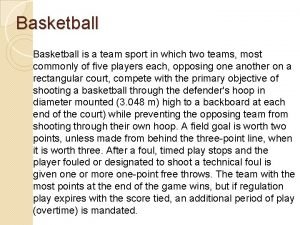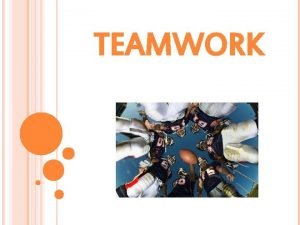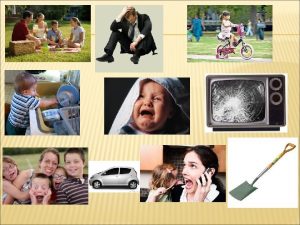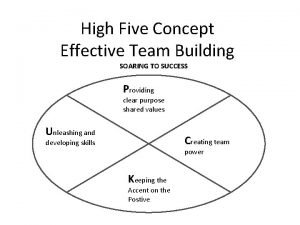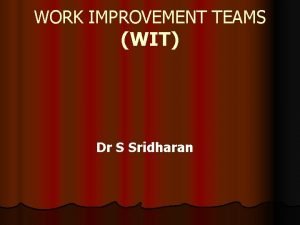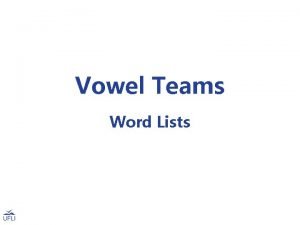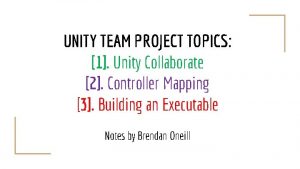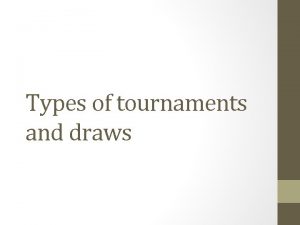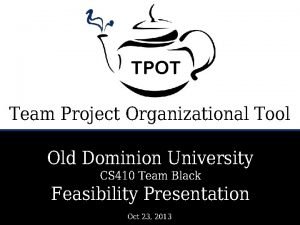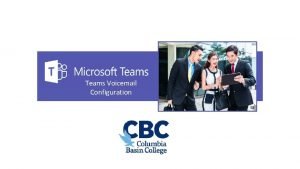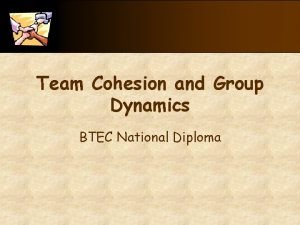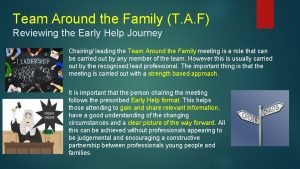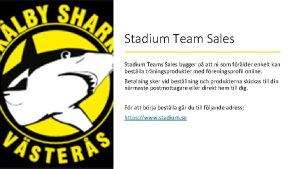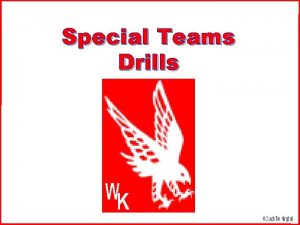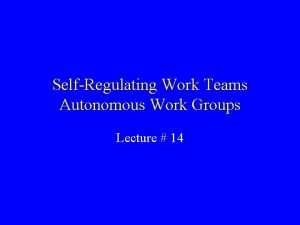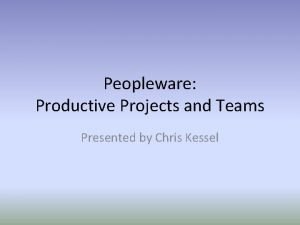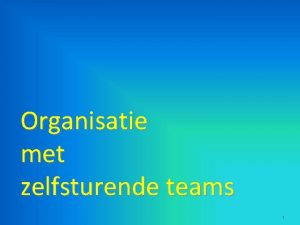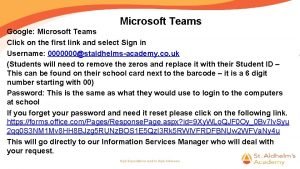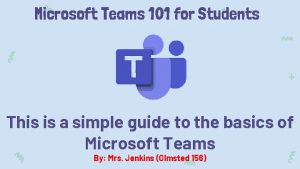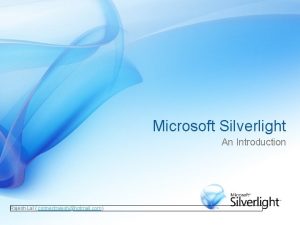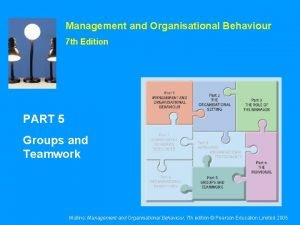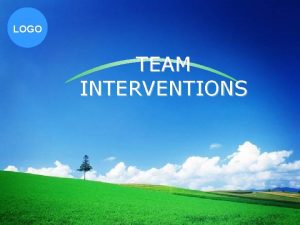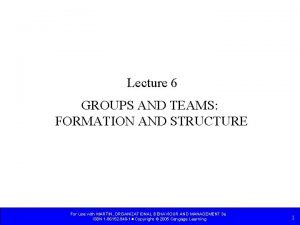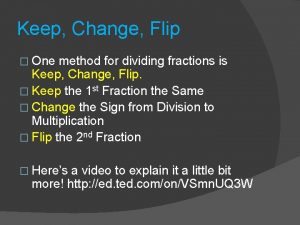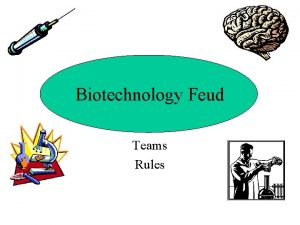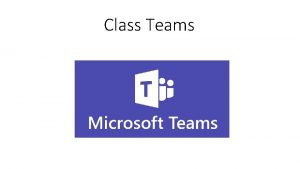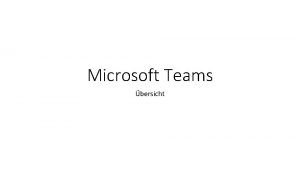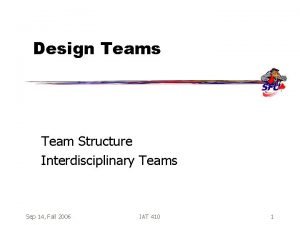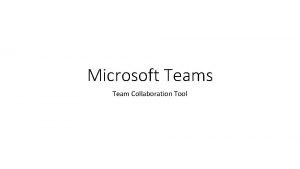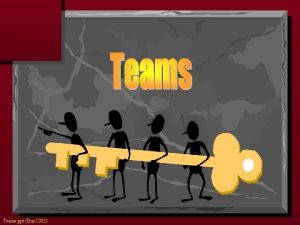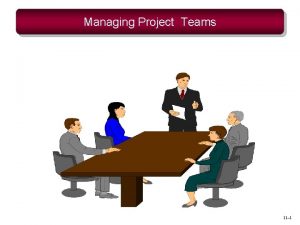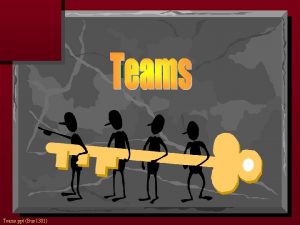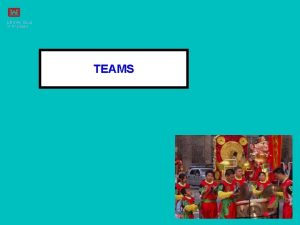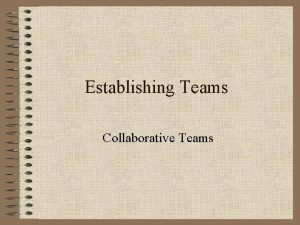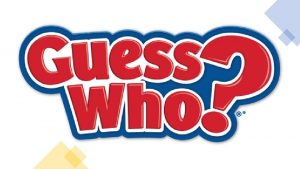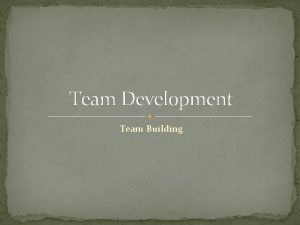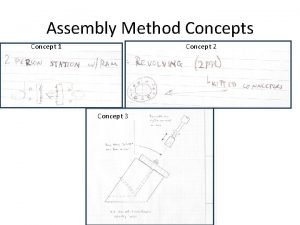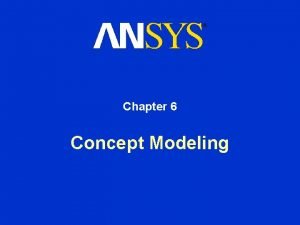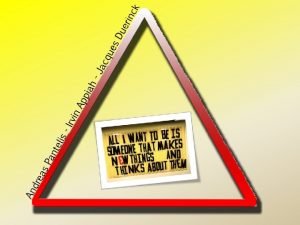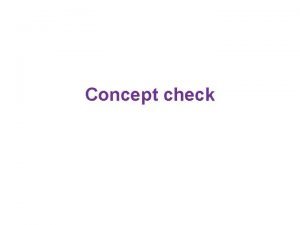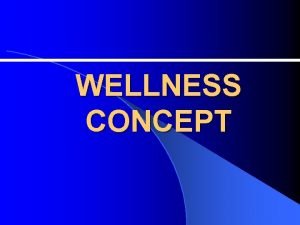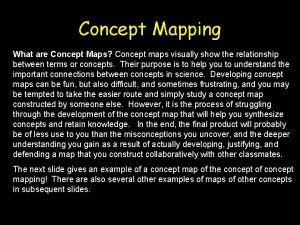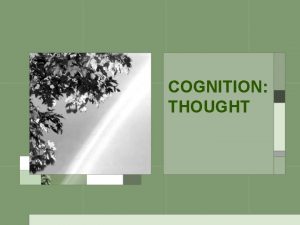TEAMS TEAM Definition Concept of a team Team




























- Slides: 28

TEAMS

TEAM • Definition • Concept of a team • Team effectiveness • Process • Work groups and work teams v learn to grow 2

TEAMS A group of people Synergy Having one aim Whole greater Cooperation than sum Flexibility Working together Serving one customer Reporting to one boss

TEAMS • • TEAM DEVELOPMENT CHARACTERISTICS VISION MISSION OBJECTIVES • The tree concept of values , skills , beliefs of the TEAM MEMBERS

TEAMS Achieve objective do real work focus on results • • Develop the individuals excite team appreciate the members Build the team lead when necessary engage the team LEADER==TIMINGS OF LEADER INTERVENTIONS COACHING ALONE IS NOT SUFFICIENT

TEAMS The SCORE concept Strategy • Effective Clear Roles Leadership Rapid response & Responsibilities SCORE Open communications

TEAMS • S : Strategy Shared purpose Clearly articulated values and ground rules Understanding of risks and opportunities facing the team Clear categorization of the overall responsibilities of the team • C : Clear Roles & Responsibilities Clear definition of roles and responsibilities Responsibility shared by all members Specific objectives to measure individual results • O : Open Communication Respect for individual differences Open and nonjudgmental communication environment among team members • R : Rapid Response Rapid response to the team’s problems , as well as to customer’s needs Effective management of and response to change in the internal and external environment • E : Effective Leadership Team leader who is able to help members achieve the objective and build the team Team leader who can draw out and free up the skills of all team members develop individuals

Comparing Work Groups and Work Teams © 2003 Prentice Hall Inc. All rights reserved.

TEAMS • • • TYPES OF TEAMS Functional team Problem solving team Cross functional team Self managed team Virtual team: clear , precise and mutually accepted goals; technology adaption; members with strong team management competencies and other core competencies

TEAMS High Task Reflexivity • Type D : Cold Efficiency Team High task effectiveness Average or poor mental health Short term visibility • Type A : Fully Functioning Team High task effectiveness Good mental health Long Term viability High Social Reflexivity Low Social Reflexivity Type C : Dysfunctional Team Poor task effectiveness Poor mental health Very low team viability • Type B : Cosy Team Poor task effectiveness Average mental health Short Term viability Low Task Reflexivity

TEAMS • • • 5 stage TEAM DEVELOPMENT MODEL Forming stage Storming stage Norming stage Performing stage Adjourning stage

Stages of TEAM Development EXHIBIT © 2003 Prentice Hall Inc. All rights reserved. 8– 12 8 -2

Stages of TEAM Development © 2003 Prentice Hall Inc. All rights reserved. 8– 13

Stages of TEAM Development © 2003 Prentice Hall Inc. All rights reserved. 8– 14

TEAMS • Collaboration Conundrums Four traits that are crucial to teams : : 1. Large size 2. Virtual Participation 3. Diversity 4. High Knowledge Levels

A Team. Effectiveness Model © 2003 Prentice Hall Inc. All rights reserved. 9– 16

Key Roles of Teams © 2003 Prentice Hall Inc. All rights reserved. 9– 17

TEAMS

TASK MANAGEMENT

TEAMS A COHESIVE TEAM WITH 5 R’s • • • ROLE RESPONSIBILITY RIGHT RELATION RESULT v learn to grow 20

TEAMS

TEAMS PERFORM DUTIES WITH 5 Ds • • • DIGNITY DECORUM DISCIPLINE DELIGHT DETERMINATION v learn to grow 22

TEAMS DEVELOP CREATIVITY THRU 5 W’s • • • WHY WHAT WHEN WHERE WHO v learn to grow 23

TEAMS DEVELOP CLEAR PERSPECTIVES THRU 5 T’s • • • TARGET TEAM TALENT TRAINING TIME v learn to grow 24

TEAMS

TEAMS IMPROVE COMM THRU 5 C’s • • • CLARITY CONCISE CONCRETE COMPLETE CONTINUITY v learn to grow 26

TEAMS • TEAM AUDIT • Aspect dimensions with ratings and comments. • This gives us a “ HOW ARE WE DOING AS A TEAM “ thus leading to scope of improvement, if any, desired changes , if required etc.

TEAMS
 Witch
Witch Gatherer
Gatherer What are the example of ideal self
What are the example of ideal self Contoh marketing concept
Contoh marketing concept What is teamwork? *
What is teamwork? * Concept team building
Concept team building Motivation work improvement team
Motivation work improvement team Ai word list
Ai word list Unity collaborate vs git
Unity collaborate vs git Types of tournament
Types of tournament Tpot teams
Tpot teams Teams voicemail greeting
Teams voicemail greeting Team cohesion examples
Team cohesion examples Team around family
Team around family Teams stadium
Teams stadium Microsoft teams channel management by sphereshield
Microsoft teams channel management by sphereshield Special teams drills
Special teams drills Autonomous work groups
Autonomous work groups Virtual teams are often slowed down by difficulty with
Virtual teams are often slowed down by difficulty with Peopleware productive projects and teams
Peopleware productive projects and teams Organogram zelfsturende teams
Organogram zelfsturende teams Ukhosted accelerated reader
Ukhosted accelerated reader Ms teams 101
Ms teams 101 Microsoft office teams rajesh
Microsoft office teams rajesh What is the difference between team and group
What is the difference between team and group Groups and teams difference
Groups and teams difference Groups and teams difference
Groups and teams difference Self-directing teams unleash
Self-directing teams unleash Keep change flip dividing fractions
Keep change flip dividing fractions
